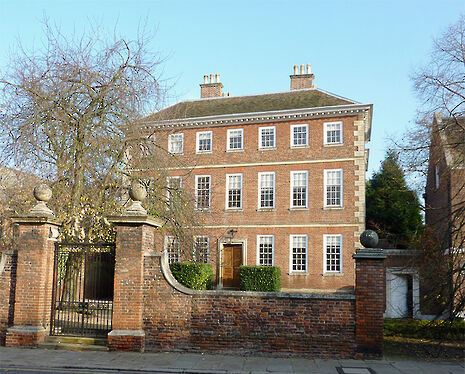Private/State statistics don’t give us the full picture
The University of Cambridge’s latest figures regarding student intake do not reflect the true state of social mobility

Another day, another misuse of statistics. On Wednesday, news broke that the University of Cambridge will be admitting the largest percentage of state-educated students compared to privately-educated students in 35 years this coming academic year.
After releasing the figure to the BBC, the university’s PR team have been quite happily bathing in the publicity with most people and many news outlets assuming that this figure signifies social mobility is improving and that Cambridge’s walls of elitism are being slowly eroded. The reality is, though, that statistics of school-type tell us very little about whether the number of students from disadvantaged backgrounds are making it into Cambridge.
I say this for two reasons. The first is that there are obviously massive differences between the class make-up of schools in the ‘state’ category. Despite the title ‘state school’ traditionally having connotations of an underprivileged, rough local-authority run institution, under that same label there are grammar schools, faith schools and comprehensives. I’m generalising here, but there’s a considerable difference between a Catholic school in a leafy suburb, filled with middle-class kids who were conveniently baptised as soon as they turned ten and an inner-city comprehensive in a working-class area. You can guess which sends the most kids to Oxbridge.
"There’s a considerable difference between a Catholic school in a leafy suburb and an inner-city comprehensive in a working-class area"
That’s before I’ve even started on grammar schools. Now, it’s not exactly a new story that grammar schools are inherently middle-class. The case is crystal clear: in 2016, only 3% of students in grammar schools were on free school meals. The national average is 14% for all school types. Potentially even more damning is the fact the figure is higher in areas with grammar schools, at 17%. There are clearly some kids from poorer homes at grammar schools, but they face massive barriers to even get there compared to middle class peers who are tutored and likely went to better primary schools. Each school is different, but it’s pretty obvious that many grammar schools may have a student body from the same affluent households as you’d find in a private, fee-paying school.
One researcher at King’s College London found evidence that a group of elite state grammar schools, clustered around London, were pulling ahead of other state schools and easily sending the same number of pupils to Oxbridge as many private schools. On the whole, a disproportionate amount of Oxbridge students – 20% of all those from state schools – come from grammar schools when they only make up 5% of school pupils nationally.
With this in mind, when we consider the increase could all be down to grammar schools, it tells us absolutely nothing about the state of Cambridge’s enormous class problem. In fact, if the increase is down to the dominance of these elite grammar schools it may well be that the problem is getting worse.
Secondly, on a related note, there’s evidence that children do well if they come from an affluent household, whatever their school type. Even in the same school, a child from a poor household will likely be outperformed by a fellow pupil from a more affluent background. There is therefore an achievement gap in schools as well as between them. So, even if the affluent didn’t pack out the best state schools, they’d still do better than the poor. In short, if daddy’s a banker, you’ll do well even if you go to a state comprehensive (and potentially better than someone on free school meals at a grammar school.)
All these nuances are abandoned when we simply look at Oxbridge admissions as a battle of state versus private schools. For simplicity’s sake, I have of course made the assumption here that good grades and performance in school translates directly to better chances of getting into Cambridge. That assumption itself falls foul of completely ignoring more diffuse factors, such as the confidence required to apply to Cambridge and preparation for interview. These are things that middle-class children at middle-class comprehensives in affluent areas or grammar schools are more likely to have. So, the situation of class divide when Oxbridge is concerned is likely worse than the situation with just school grades.
Simply looking at state school statistics masks a whole range of issues Cambridge, and indeed the whole of British society, has regarding social mobility. The recent news should therefore be seen for what it is: a PR exercise which could be based on no real change at all and which brushes over the grim reality of social mobility in this country today
 News / Clare Hall spent over £500k opposing busway 24 December 2025
News / Clare Hall spent over £500k opposing busway 24 December 2025 Comment / The ‘class’ of Cambridge24 December 2025
Comment / The ‘class’ of Cambridge24 December 2025 News / Caius mourns its tree-mendous loss23 December 2025
News / Caius mourns its tree-mendous loss23 December 2025 Comment / Yes, I’m brown – but I have more important things to say22 December 2025
Comment / Yes, I’m brown – but I have more important things to say22 December 2025 News / Girton JCR publishes open letter expressing solidarity with Palestine25 December 2025
News / Girton JCR publishes open letter expressing solidarity with Palestine25 December 2025










